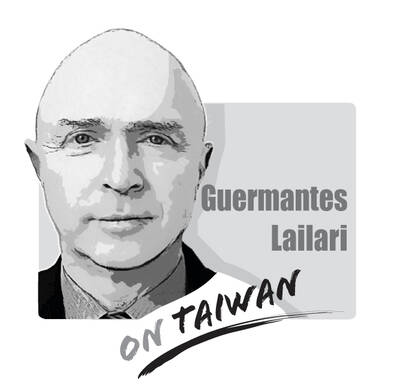During an e-mail interview with the Central News Agency (CNA) earlier this month, in which the expected benefits of the Economic Cooperation Framework Agreement (ECFA) signed by Taipei and Beijing were discussed, WTO Director-General Pascal Lamy was quoted as referring to Taiwan not by its official designation at the trade organization, but rather as “Chinese Taipei.”
Wire searches returned the key two entries — one, the original interview in English, and the other a Chinese translation of that interview.
In the English article, titled “ECFA will help Taiwan integrate into global economy: WTO,” CNA quotes Lamy as saying: “Now, the ECFA is an important initiative in this endeavor and we think it could considerably improve cross-strait relations and can be very important for ensuring the competitiveness of domestic industries and further integrate Chinese Taipei into the world economy.”
Meanwhile, the Chinese version avoided direct mention of the national title [「現在,ECFA在這些努力中是一個重要作為,我們認為可以相當程度地改善兩岸關係,對確保國內產業競爭力及進一步納入世界經濟也是非常重要」].
I have since learned from a contact at CNA that throughout the interview, CNA reporters always referred to Taiwan as “Taiwan,” while Lamy invariably referred to it as “Chinese Taipei.” He did not even use Taiwan’s official name as a WTO member, the (admittedly tongue-twisting) Separate Customs Territory of Taiwan, Penghu, Kinmen and Matsu, or a more convenient shorthand, such as Republic of China.
The CNA reporters’ insistence on referring to Taiwan by its proper name, and use of the word Taiwan in its headlines, is commendable, especially in light of the pro-KMT management at the top of the news organization.
The CNA sources also say that “Chinese Taipei” is the name the WTO usually uses in interviews and documents. The WTO Web site’s list of 153 members uses the designation “Chinese Taipei,” although in alphabetical terms it falls under “T.”
The “Chinese Taipei” page, meanwhile, refers to Taiwan as the “Separate Customs Territory of Taiwan, Penghu, Kinmen and Matsu (Chinese Taipei) and the WTO,” with most links to articles and documents using “Chinese Taipei.”
The “Chinese Taipei” designation is obviously a concession on the part of the WTO to please Beijing, and raises questions about the world body’s ability to properly “review” the ECFA documents that, once translated into English, Taipei and Beijing will be submitting to it.
By its mandate, the WTO should be treating Taiwan and China as two distinct, sovereign entities in ensuring that the ECFA respects WTO regulations.
However, the organization’s fuzziness on Taiwan’s name and ostensible willingness to yield to pressure from Beijing highlights the very real possibility that in reviewing the ECFA, the WTO could regard the matter as a domestic one, or at minimum be extremely reluctant to raises issues with some of the clauses.
Either way, this bodes ill for Taiwanese sovereignty, even if only at the symbolic level. Some Taiwanese media have already speculated that at a more personal level, Lamy regards the deal as a domestic one.
If Lamy’s were the guiding policy at the WTO, then the body’s “review” of the ECFA would be meaningless, as the WTO can only intervene in trade matters involving two sovereign states.
E-mails to Mr. Lamy’s office went unanswered.
J. Michael Cole is deputy news editor at the Taipei Times.

There is much evidence that the Chinese Communist Party (CCP) is sending soldiers from the People’s Liberation Army (PLA) to support Russia’s invasion of Ukraine — and is learning lessons for a future war against Taiwan. Until now, the CCP has claimed that they have not sent PLA personnel to support Russian aggression. On 18 April, Ukrainian President Volodymyr Zelinskiy announced that the CCP is supplying war supplies such as gunpowder, artillery, and weapons subcomponents to Russia. When Zelinskiy announced on 9 April that the Ukrainian Army had captured two Chinese nationals fighting with Russians on the front line with details
Within Taiwan’s education system exists a long-standing and deep-rooted culture of falsification. In the past month, a large number of “ghost signatures” — signatures using the names of deceased people — appeared on recall petitions submitted by the Chinese Nationalist Party (KMT) against Democratic Progressive Party legislators Rosalia Wu (吳思瑤) and Wu Pei-yi (吳沛憶). An investigation revealed a high degree of overlap between the deceased signatories and the KMT’s membership roster. It also showed that documents had been forged. However, that culture of cheating and fabrication did not just appear out of thin air — it is linked to the
The Chinese Nationalist Party (KMT), joined by the Taiwan People’s Party (TPP), held a protest on Saturday on Ketagalan Boulevard in Taipei. They were essentially standing for the Chinese Communist Party (CCP), which is anxious about the mass recall campaign against KMT legislators. President William Lai (賴清德) said that if the opposition parties truly wanted to fight dictatorship, they should do so in Tiananmen Square — and at the very least, refrain from groveling to Chinese officials during their visits to China, alluding to meetings between KMT members and Chinese authorities. Now that China has been defined as a foreign hostile force,
On April 19, former president Chen Shui-bian (陳水扁) gave a public speech, his first in about 17 years. During the address at the Ketagalan Institute in Taipei, Chen’s words were vague and his tone was sour. He said that democracy should not be used as an echo chamber for a single politician, that people must be tolerant of other views, that the president should not act as a dictator and that the judiciary should not get involved in politics. He then went on to say that others with different opinions should not be criticized as “XX fellow travelers,” in reference to